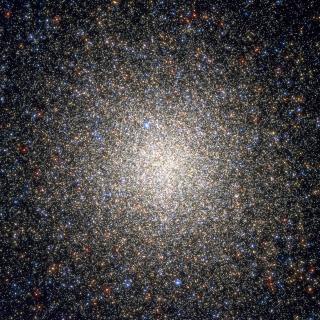Bibcode
Piotto, G.; Milone, A. P.; Marino, A. F.; Bedin, L. R.; Anderson, J.; Jerjen, H.; Bellini, A.; Cassisi, S.
Referencia bibliográfica
The Astrophysical Journal, Volume 775, Issue 1, article id. 15, 7 pp. (2013).
Fecha de publicación:
9
2013
Revista
Número de citas
37
Número de citas referidas
36
Descripción
We present new UV observations for NGC 288, taken with the WFC3 detector
on board the Hubble Space Telescope, and combine them with existing
optical data from the archive to explore the multiple-population
phenomenon in this globular cluster (GC). The WFC3's UV filters have
demonstrated an uncanny ability to distinguish multiple populations
along all photometric sequences in GCs thanks to their exquisite
sensitivity to the atmospheric changes that are telltale signs of
second-generation enrichment. Optical filters, on the other hand, are
more sensitive to stellar-structure changes related to helium
enhancement. By combining both UV and optical data, we can measure the
helium variation. We quantify this enhancement for NGC 288 and find that
the variation is typical of what we have come to expect in other
clusters.
Based on observations with the NASA/ESA Hubble Space Telescope, obtained
at the Space Telescope Science Institute, which is operated by AURA,
Inc., under NASA contract NAS 5-26555.
Proyectos relacionados

Vía Láctea y galaxias cercanas
El objetivo general del Proyecto es el estudio de la estructura, historia evolutiva y proceso de formación de galaxias a través de sus poblaciones estelares resueltas, tanto a partir de fotometría como espectroscopia. El proyecto puede dividirse en cuatro líneas principales: I. Historia de formación estelar en el Grupo Local. El objetivo de esta
Martín
López Corredoira